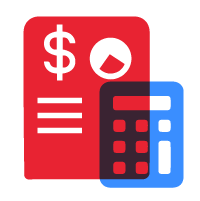Navigating the highly competitive digital landscape requires businesses to deeply understand and effectively manage the Business-to-Consumer (B2C) customer journey. Customer journey mapping is crucial for understanding and managing this journey, as it defines every interaction consumers experience with your brand from the initial point of contact through ongoing engagements that foster lasting relationships. Businesses that successfully navigate this journey consistently attract and retain repeat customers well, thereby achieving sustainable growth and competitive advantage.
In this article, we’ll explore the essential stages of the B2C customer journey and why mapping it is critical for business success. You’ll learn how to identify key touchpoints, enhance customer experiences, and implement strategies that drive engagement, loyalty, and revenue.

Understanding the B2C Customer Journey
The customer journey includes multiple interconnected stages: awareness, consideration, decision-making, retention, and advocacy. These ‘customer journey stages’ illustrate the progression of customers through various phases of the purchasing process before making a purchase decision. Understanding each ‘customer journey stage’ is crucial for tailoring marketing and customer service strategies effectively, aiming to enhance customer engagement and satisfaction throughout their journey.
Each stage of the ideal customer journey offers unique opportunities for meaningful interactions that shape consumers’ perceptions and loyalty towards your brand. Effective management across these phases results in increased conversions, enhanced customer experiences, and improved brand equity.
What is a Customer Journey?
A customer journey refers to the process by which customers progress from being a part of the target audience to becoming loyal fans of a brand. This journey encompasses all the interactions or touchpoints between potential customers and a company, starting from the initial awareness stage and continuing through to the advocacy stage.
Understanding the customer journey is crucial for businesses as it allows them to provide personalized experiences that meet the evolving needs and expectations of their customers. By creating a customer journey map, companies can identify key moments that influence customer decisions and optimize their strategies to enhance overall satisfaction and loyalty.
Stages of the B2C Customer Journey
The B2C customer journey unfolds across five stages: Awareness, Consideration, Decision, Retention, and Advocacy. Each stage requires specific strategies to attract, convert, and retain customers effectively.
1. Awareness Stage: Capturing Consumer Interest
The awareness stage involves the initial steps a target audience takes when discovering your brand for the first time. In a crowded marketplace, capturing consumer attention requires strategic actions:
- Content Marketing: High-quality blogs, ebooks, videos, and infographics help consumers understand your solutions and expertise.
- SEO (Search Engine Optimization): Implementing targeted keywords, optimized content, and technical SEO ensures your content ranks prominently in search engines, attracting organic traffic. Businesses often achieve optimal results by utilizing professional search engine optimization solutions.
- Social Media Engagement: Active participation on platforms like Instagram, Facebook, and LinkedIn establishes brand presence, increases visibility, and creates direct interactions with consumers.
- Influencer Marketing: Partnering with trusted influencers who align with your brand’s identity helps extend your reach and credibility.
2. Consideration Stage: Guiding the Customer’s Decision
At this phase of the purchasing decision-making process where consumers evaluate your products or services against those offered by competitors. To effectively influence consumer decisions:
- Educational Content: Comprehensive guides, detailed comparisons, product reviews, and case studies demonstrate your brand’s unique benefits.
- Customer Testimonials: Showcasing authentic and positive feedback boosts trust and credibility.
- Retargeting Ads: Digital ads aimed at consumers who previously engaged with your brand keep your offerings at the forefront of their consideration.
3. Decision/Purchase Stage: Facilitating the Conversion
Simplifying and streamlining the purchase process helps maximize conversions and enhance the customer experience by detailing the steps involved in the buying process and facilitating the conversion:
- Optimized User Experience (UX): A smooth, intuitive checkout experience reduces friction and increases the likelihood of completing purchases.
- Multiple Payment Options: Providing various secure payment methods caters to diverse customer preferences and needs.
- Clear Calls-to-Action (CTAs): Precise and persuasive CTAs encourage immediate action and enhance conversion rates.
4. Retention Stage: Building Long-Term Relationships
Customer retention is foundational for sustainable success. Keeping more customers coming and your existing customers engaged requires ongoing customer interaction through proactive strategies:
- Personalized Email Marketing: Targeted emails tailored to customer preferences, past interactions, and purchasing history enhance engagement and loyalty.
- Customer Loyalty Programs: Reward-based initiatives encourage repeat purchases and foster long-term loyalty.
- Exceptional Customer Service: Prompt and empathetic customer support ensures ongoing satisfaction, resolving concerns effectively and enhancing your brand’s reputation.
5. Advocacy Stage: Encouraging Customer Recommendations
Satisfied and loyal customers naturally evolve into brand advocates through well-mapped customer journeys, amplifying your reach through positive word-of-mouth:
- Referral Programs: Incentivizing referrals from existing customers significantly expands your customer base.
- User-Generated Content: Authentic content from satisfied customers boosts brand credibility and provides powerful social proof.
- Community Engagement: Active online communities or offline events foster deeper customer relationships, enhancing brand loyalty and advocacy.
Common Pitfalls and How to Avoid Them
Optimizing your B2C customer journey requires addressing the entire b2b customer journey and avoiding common mistakes:
- Neglecting Post-Purchase Engagement: Consistent post-sale interactions keep your brand relevant to customers and strengthen loyalty.
- Ignoring Customer Feedback: Regularly collecting and analyzing customer feedback helps refine strategies and improve customer experiences.
- Prioritizing Acquisition Over Retention: Balancing efforts between acquiring new customers and retaining existing ones is crucial for long-term profitability.
Leveraging Technology to Optimize the Customer Journey
Innovative technologies enhance your marketing department and ability to engage consumers effectively:
- AI in Customer Support: AI-powered chatbots enable instant, personalized customer interactions, efficiently resolving common queries.
- Marketing Automation Tools: Businesses can improve efficiency by partnering with specialized digital marketing outsourcing providers that leverage automation platforms.
- Predictive Analytics: Utilizing data analytics tools allows businesses to anticipate consumer behaviors and personalize customer experiences proactively.
- Customer Journey Maps: Technology helps visualize and understand various stages of customer interaction through customer journey maps, which are essential for improving customer satisfaction and long-term relationships.
Explore how specialized digital marketing outsourcing solutions can enhance your marketing strategy and customer journey optimization.
Creating an Effective Customer Journey Map
A detailed customer journey map visually represents every touchpoint a customer encounters, identifying critical pain points and opportunities. Customer journey map examples can help businesses create unique journey maps tailored to ideal customers and their specific needs, visually detailing touchpoints, feelings, and behaviors. This helps businesses continuously optimize their processes and strategies to meet evolving consumer expectations.
Key steps include:
- Define Customer Personas: Clearly identify the different segments within your audience.
- Identify Touchpoints: Map out all interactions consumers have with your brand.
- Analyze Customer Behavior: Use data-driven insights to identify customer needs, preferences, and pain points.
- Optimize and Adjust: Regularly revisit your journey map to refine strategies based on customer feedback and changing market dynamics.
Benefits of Customer Journey Mapping
Customer journey mapping offers numerous benefits for businesses, making it an invaluable tool for enhancing customer experiences and driving growth. Here are some key advantages:
- Improved Customer Satisfaction: By understanding the customer’s perspective and identifying pain points, businesses can design experiences that not only meet but exceed customer expectations. This leads to higher levels of satisfaction and positive brand perception.
- Increased Customer Retention: Customer journey mapping helps businesses pinpoint areas for improvement and optimize the customer experience. This proactive approach fosters loyalty and encourages repeat business, significantly boosting customer retention rates.
- Enhanced Customer Experience: With a clear view of the customer journey, businesses can create personalized experiences that resonate with their audience. Engaging customers through tailored interactions builds stronger relationships and enhances overall customer experience.
- Increased Customer Lifetime Value: Providing exceptional customer experiences leads to increased loyalty and retention, which in turn boosts the customer’s lifetime value. Satisfied customers are more likely to make repeat purchases and recommend the brand to others.
- Competitive Advantage: Businesses that prioritize customer journey mapping can differentiate themselves from competitors. By consistently delivering superior customer experiences, they establish a leadership position in their industry and attract a loyal customer base.
Steps for Creating a Customer Journey Map
Creating a customer journey map is a crucial step in understanding the customer’s experience and identifying areas for improvement. Here are the steps to create a customer journey map:
- Define the Scope: Start by identifying the specific customer journey you want to map, such as the onboarding process or the purchasing process. This helps in focusing your efforts and gathering relevant data.
- Gather Data: Collect customer feedback, surveys, and data from various touchpoints to understand the customer’s experience. This data-driven approach ensures that your map is based on actual customer interactions and insights.
- Identify Customer Personas: Create customer personas to represent the different types of customers and their needs. These personas help in understanding the diverse experiences and expectations of your target audience.
- Map the Customer Journey: Use a visual representation to map the customer journey, including all touchpoints and interactions. This visual tool helps in identifying key moments that influence customer decisions.
- Analyze the Customer Journey: Analyze the customer journey to identify pain points, areas for improvement, and opportunities for optimization. This step is crucial for enhancing customer satisfaction and retention.
- Prioritize Improvements: Based on customer feedback and business goals, prioritize the improvements that will have the most significant impact on the customer experience.
- Implement Changes: Implement the changes and monitor the results. This iterative process ensures that your strategies are effective and aligned with customer needs.
- Review and Refine: Regularly review and refine the customer journey map to ensure it remains accurate and effective. Continuous optimization is key to maintaining a positive customer experience.
Customer Feedback and Touchpoints
Customer interactions, feedback, and multiple touchpoints are essential components of the customer journey. Understanding these elements helps businesses design experiences that meet the evolving needs and expectations of their customers. By actively seeking and analyzing customer feedback, companies can gain valuable insights into the customer’s experience and identify areas for improvement.
Similarly, mapping out customer touchpoints allows businesses to understand how customers interact with their brand at various stages, enabling them to optimize these interactions for better engagement and satisfaction.
The Importance of Customer Feedback
Customer feedback is critical for businesses to understand the customer’s perspective and identify areas for improvement. It provides valuable insights into the customer’s experience, helping businesses to:
- Identify Pain Points: Customer feedback helps businesses pinpoint specific areas where the customer experience can be improved. By addressing these pain points, companies can enhance overall satisfaction and loyalty.
- Design Personalized Experiences: Feedback from customers enables businesses to tailor their offerings to meet the unique needs and preferences of their audience. Personalized experiences are more likely to engage customers and foster long-term relationships.
- Measure Customer Satisfaction: Customer feedback serves as a metric for gauging satisfaction and loyalty. Regularly collecting and analyzing feedback allows businesses to track their performance and make data-driven decisions to improve the customer experience.
Related Article:
How to Make the Most of Customer Feedback to Grow Your Business
Discover how to transform customer feedback into powerful insights that improve your service, build loyalty, and accelerate business growth. Keep reading!
Customer Touchpoints
Customer touchpoints are the key interactions that occur between a customer and a business throughout the B2C customer journey. These touchpoints span multiple channels and stages, including:
- Website Interactions: Customers interact with a business’s website, social media platforms, and online advertising. Ensuring a seamless and engaging online experience is crucial for capturing and retaining customer interest.
- Customer Service Interactions: Customers engage with customer service representatives via phone, email, or chat. Providing prompt and empathetic support at these touchpoints is essential for resolving issues and maintaining customer satisfaction.
- In-Store Interactions: In physical stores, customers interact with sales associates and other customers. Creating a welcoming and helpful in-store environment can significantly enhance the customer experience.
- Product Interactions: Customers interact with a business’s products or services directly. Ensuring high-quality and user-friendly products is key to meeting customer expectations and fostering loyalty.
Understanding customer touchpoints helps businesses design experiences that engage customers and build strong relationships. By mapping out these touchpoints, companies can identify areas for improvement and optimize the entire customer experience further, ultimately driving satisfaction and loyalty.
B2C Customer Journey Orchestration
B2C customer journey orchestration is the process of designing and optimizing the customer journey to meet the needs of business-to-consumer customers. This involves creating a seamless and personalized experience across all touchpoints, from awareness to advocacy.
To achieve effective B2C customer journey orchestration, businesses must deeply understand their customers’ needs, preferences, and behaviors. Leveraging data and analytics is essential to identify areas for improvement and optimize the customer journey.
Mastering B2C Customer Journey Orchestration
Mastering B2C customer journey orchestration requires a combination of strategy, technology, and data. Here are some tips for mastering B2C customer journey orchestration:
- Use Customer Journey Mapping: Utilize customer journey mapping to visualize the customer journey and identify areas for improvement. This tool helps in understanding the entire customer journey and optimizing each touchpoint.
- Leverage Data and Analytics: Leverage data and analytics to understand customer behavior and preferences. Data-driven insights enable businesses to make informed decisions and tailor their strategies effectively.
- Implement Personalization: Implement personalization across all touchpoints to create a seamless and personalized experience. Personalized interactions build stronger relationships and enhance customer loyalty.
- Use Omnichannel Engagement: Engage with customers across multiple channels to ensure a consistent and cohesive experience. Omnichannel engagement helps in reaching customers wherever they are and maintaining a unified brand presence.
- Monitor and Optimize: Regularly monitor and optimize the customer journey to ensure it remains effective. Continuous evaluation and refinement are essential for adapting to changing customer needs and market dynamics.
Customer Journey Map Examples
Customer journey maps are powerful tools for visualizing the B2C customer journey, helping businesses pinpoint pain points and opportunities for improvement. Below are some examples of effective customer journey maps:
- Simple Customer Journey Map: A straightforward map that outlines the customer’s experience from awareness to advocacy. This type of map is ideal for businesses looking to get a basic understanding of their customer journey.
- Complex Customer Journey Map: A detailed map that outlines the customer’s experience across multiple touchpoints and channels. This comprehensive approach helps in identifying intricate details and optimizing the entire customer journey.
- Customer Journey Map with Personas: A map that includes customer personas to represent the different types of customers and their needs. This approach helps in understanding the diverse experiences and expectations of various customer segments.
- Customer Journey Map with Pain Points: A map that identifies pain points and areas for improvement. Highlighting these critical moments allows businesses to address issues proactively and enhance the customer experience.
Real-World Examples of Customer Journey Maps
Here are some real-world examples of customer journey maps:
- Amazon Customer Journey Map: Amazon’s customer journey map outlines the customer’s experience from awareness to advocacy, including all touchpoints and interactions. This map helps Amazon continuously optimize its customer experience.
- Starbucks Customer Journey Map: Starbucks’ customer journey map details the customer’s experience from awareness to advocacy, covering all touchpoints and interactions. This comprehensive map helps Starbucks in delivering a consistent and engaging customer experience.
- Apple Customer Journey Map: Apple’s customer journey map illustrates the customer’s experience from awareness to advocacy, including all touchpoints and interactions. This map helps Apple in maintaining their high standards of customer satisfaction and loyalty.
These examples demonstrate how customer journey maps can be used to understand the customer’s experience and identify areas for improvement. By leveraging these insights, businesses can enhance their customer journey and drive long-term success.
Turning Insights into Action
Consistently applying insights derived from your B2C customer journey analysis is essential to achieving customer success. Regular evaluation of customer data enables proactive identification and resolution of emerging issues, ensuring a seamless customer experience.
Consider enhancing your sales team’s operational efficiency and customer engagement through expert outsourcing services tailored to your unique requirements.
From Visitors to Loyal Customers: Long-Term Success
Mastering the entire customer journey requires ongoing strategic efforts, as most customer journeys involve mapping and analyzing the various phases that customers go through. This includes consistent evaluation, innovation, and adaptation to consumer expectations and market changes.
Unlock your business potential with our top-tier digital marketing outsourcing solutions. Discover how our other outsourcing services can drive growth and enhance customer loyalty, tailored specifically to meet your unique needs.
Frequently Asked Questions
1. What is the difference between B2C and B2B customer journeys?
The B2C customer journey typically involves shorter decision-making cycles, emotional triggers, and individual consumer preferences, while B2B journeys are longer, involve multiple stakeholders, and are driven by logic and ROI considerations.
2. How can businesses measure the success of their customer journey strategy?
Success can be tracked through metrics like conversion rates, customer satisfaction scores (CSAT), Net Promoter Score (NPS), and customer retention rates, which indicate how well your strategy is performing.
3. Do all businesses need a formal customer journey map?
While small businesses can start with simple frameworks, a formal customer journey map is highly beneficial for aligning marketing, sales, and service efforts, especially as a business grows and customer interactions become more complex.
4. What role does personalization play in the B2C customer journey?
Personalization significantly enhances engagement by tailoring experiences to individual preferences, increasing the likelihood of conversion and long-term loyalty.
5. Can technology fully automate the B2C customer journey?
Technology can streamline and enhance many aspects of the journey, such as personalized recommendations, automated emails, and chatbots, but human oversight is still essential for empathy-driven engagement and problem-solving.







